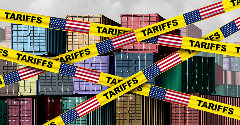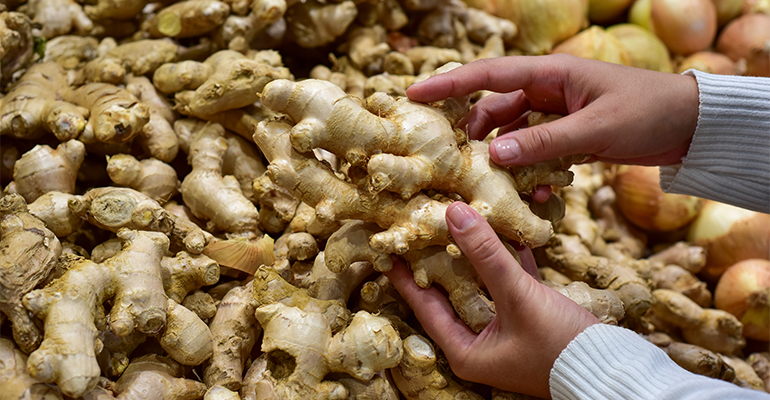News
Allergen-friendly product launches are on the rise
23 May 2024Amid Allergy Awareness Week and the growing number of consumers with allergies and sensitivities, manufacturers are increasingly exploring free-from product launches.
By 2026, one in two people are anticipated to have an allergy, and in 2022, it was the number one reported health condition, the British medical charity Allergy UK, reports.

With its campaign hashtag #toobigtoignore, Allergy Awareness Week 2024, which took place between 22nd April and 28th April 2024, aims to highlight the incidence of allergies. While the campaign, which started in 1996, has simultaneously occurred alongside many developments, Allergy UK says what has not changed is “an attitude which fails to understand allergy as a serious disease”.
Industry support for allergens and sensitivities
The food sector has made strides in gearing to support consumers with allergens and sensitivities. One research study reveals that as of 2021, 66 countries had some mandatory labelling requirements in place to identify common food allergens. However, while these legally require manufacturers to declare the use of allergenic ingredients in prepackaged foods, a lack of uniformity exists within the mandatory allergen list.
“This is a major improvement from 20 years ago, but there is a lot of work to be done to protect the food-allergic consumer better,” Angela Johnson, a registered dietician, and dietary and nutrition insights manager for HealthFocus, told Ingredients Network.
For example, there is no universal standard for food-allergen labelling. While most require labels to indicate “the Big 8”—milk, eggs, fish, shellfish, peanuts, tree nuts, wheat, and soybeans—some countries have stronger legislation that requires additional allergen-containing foods to be listed.
More than 80 countries have no allergen-labelling requirements. “This inconsistency is obviously problematic, and the goal is to reach a global consensus,” Johnson says.
In response, the World Allergy Organization (WAO) seeks to bring together the food industry, regulators, and international organisations to establish mandatory allergen labelling and set standards around cross-contamination, standardised allergen-detection methods and best practices.
Consumer management of allergies and sensitivities
Campaigns like Allergy Awareness Week shine a brighter spotlight on allergy-free product launches as manufacturers strive to support the 28% of adults recorded in 2023 as trying to manage or treat a food allergy or sensitivity, according to a Hartman’s wellness study.
The consensus is that living with a food allergy is a lot of work. “The constant vigilance, having to research any new product you want to try, the worry and fear around eating at restaurants or others’ homes…for many, it’s literally a matter of life or death every day,” says Johnson.
Managing allergies and dietary sensitivities is also often very expensive. “In the area of the US where I live, a loaf of gluten-free bread costs anywhere from $7 to $10, while a loaf of wheat bread can sometimes be as little as a dollar or two,” Johnson says. The same cost ratio between regular and free-from products is true with non-dairy cheese and yoghurts, and many other allergen-free foods, Johnson adds.
More allergen-free products entering the market?
Food sales labelled as allergen-friendly grew 25% for the year ending on 26th February 2023, with units increasing by 8.7%, the Institute of Food Technologists (IFT) detailed, per Circana findings. In the year ending 18th June 2023, unit sales of cookies and snack bars free from the top nine allergens saw an 11% rise, according to SPINs data.
“I think we will see more allergen-free products on the market,” Johnson says. Whereas in the past, consumers would have to go to a specialty store for these niche products, today’s supermarkets have gluten-free, dairy-free, vegan, or other foods specifically formulated to avoid one or more allergens.
“Plus, unfortunately, food allergies are on the rise, with prevalence more than doubling since 1960,” says Johnson. Although the prevalence of a true food allergy is still hovering around 1 in 10 people, Johnson adds that many more have a less severe but problematic intolerance to common food allergens, and these consumers also buy allergen-free products.
According to new data from the 2024 HealthFocus Global Trend Study, over one-third of global consumers (34%) are highly concerned about food allergies, and around 10% say they are personally affected. Younger consumers and parents are especially concerned.
South Asia has the highest number of consumers extremely or very concerned about allergies to foods such as gluten and lactose, with almost (49%) of shoppers worried. HealthFocus International’s findings reveal that the Middle East and Africa (MEA) come in second, at 42%, followed by Latin America (36%) and East Asia Pacific (33%).
With the increase in vegan products, producers are creating foods that eliminate two common allergens—milk and eggs. “Manufacturers can expand their food-allergic consumer base by making products that avoid two or more food allergens,” says Johnson. “Some manufacturers even create products free from all of “the Big 8”, plus additional ingredients that fewer people are allergic to,” Johnson adds.
In the US, “allergen-free” labels are highly important to over a quarter of consumers, especially in younger cohorts. The 2024 Global Trend Study also reveals that over a quarter (27%) of global consumers actively avoid gluten. “Free-from” claims, including gluten and grain, have a strong niche, with over 35% of consumers saying these are highly important on food labels.
“Dedicated allergen-free facilities that prevent cross-contamination from allergen ingredients are few and far between,” says Johnson. Collaborations between manufacturers to share these facilities could increase efficiency, cut costs, and help expand the number of safe, allergen-free products available to consumers.
Related news

Food security-insecurity gap grows, hitting vulnerable regions hardest
16 Oct 2025
While food security has increased in most countries, the world’s most vulnerable nations’ struggles continue and intensify, a USDA analysis reveals.
Read more
UK university launches global food insecurity lab
7 Jul 2025
A university lab dedicated to exploring food and nutrition insecurity has found that if no climate action is taken, heatwave events may cause global food insecurity to rise by 12.8 percentage points.
Read more
World Food Safety Day shines a spotlight on science
19 Jun 2025
On 7 June, the World Health Organization (WHO) held its annual World Food Safety Day, highlighting the role scientific research and innovation play in supporting consumers’ health.
Read more
Africa and Middle East most vulnerable markets to food fraud
28 May 2025
Consumers in Africa and the Middle East face a higher risk of consuming adulterated foods – especially with tariffs causing chaos in the global food supply chain, experts warn.
Read more
UNIDO highlights food system transformation as a driver of industrial growth
8 May 2025
Agroprocessing and food innovation are driving industrial development, with Senegal and Brazil offering examples of targeted national strategies.
Read more
Will Trump lower tariff hikes?
25 Apr 2025
The US President’s plan to reduce the 145% tariffs on China’s food and beverage market raises questions over whether a turnaround is likely for other regions.
Read more
Global consumers enjoy food less and perceive it as less healthy
20 Mar 2025
Enjoyment of food and its perceived healthiness is dwindling among most global populations, according to findings from Gallup and Ando Foundation/Nissin Food Products.
Read more
Seafood set to ‘dethrone’ poultry as protein growth king
19 Mar 2025
Seafood is poised to surpass poultry as the leading contributor to global protein supply growth this year, according to Rabobank’s latest protein outlook.
Read more
Crop failures threaten Nigeria’s ginger industry
28 Feb 2025
A sharp drop in Nigerian ginger production is affecting global supply chains, with exports falling by 74% due to a severe outbreak of ginger blight.
Read more
Have scientists discovered a new tool to measure UPFs?
19 Feb 2025
Researchers have developed a new scoring system and database, compiling over 50,000 food items, of which over 1,000 are classified as ultra-processed.
Read more